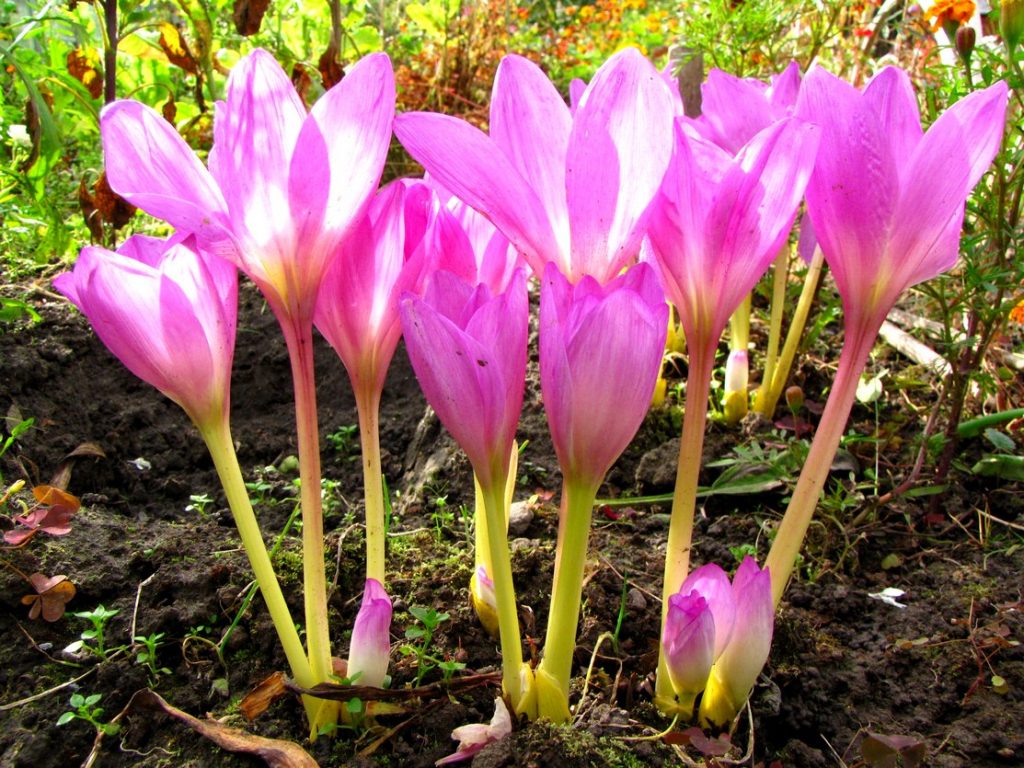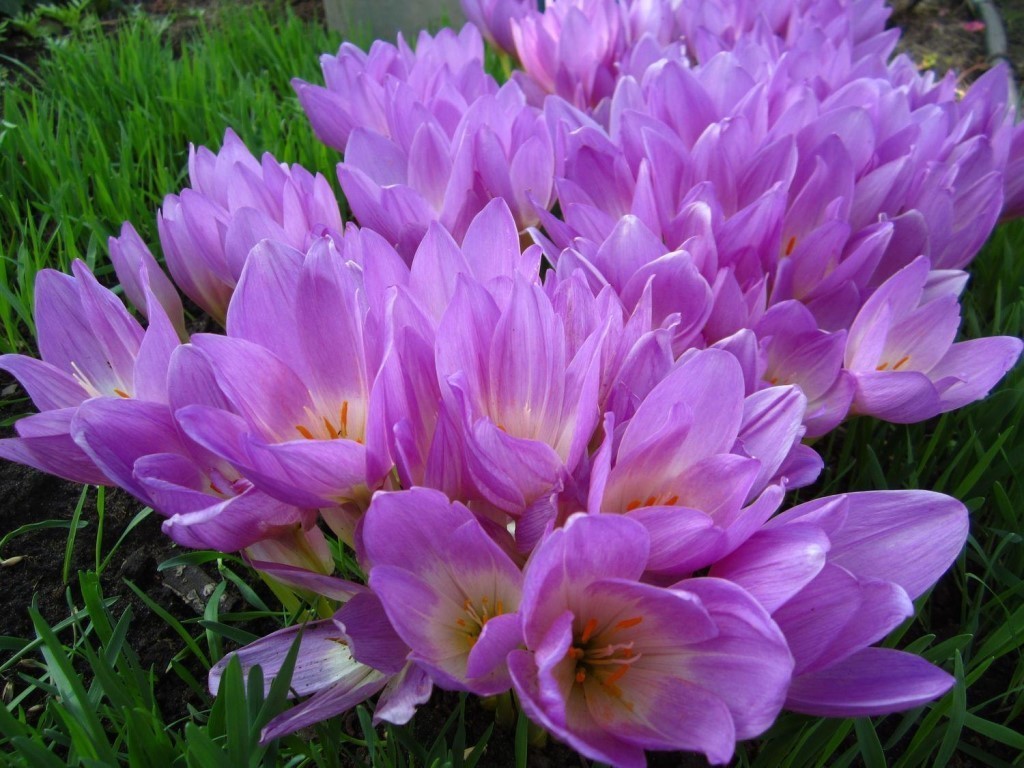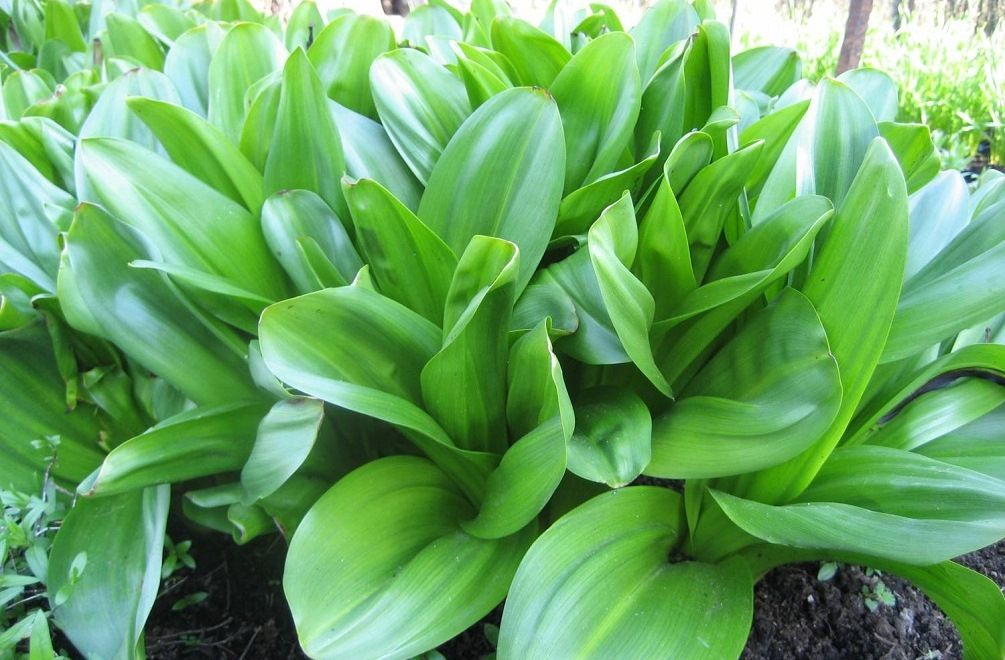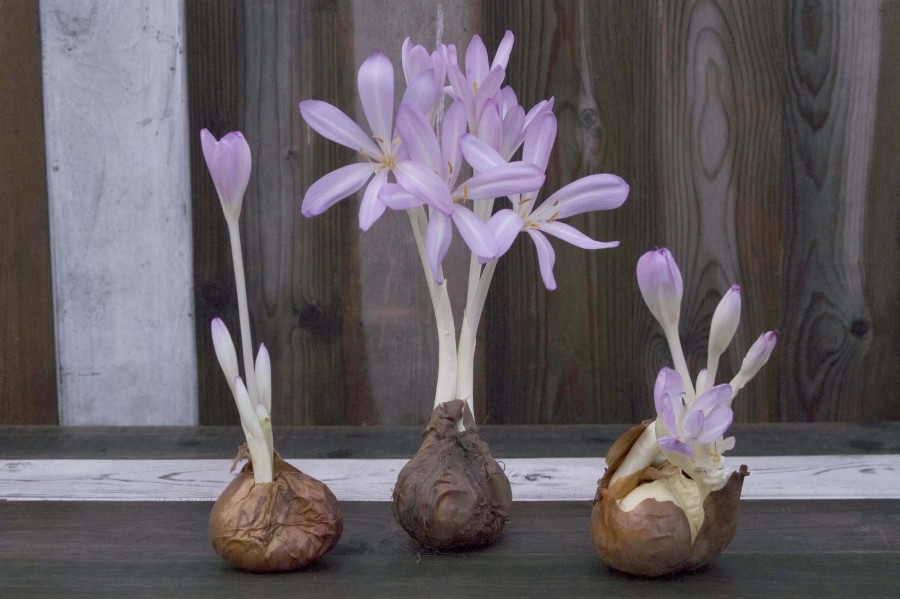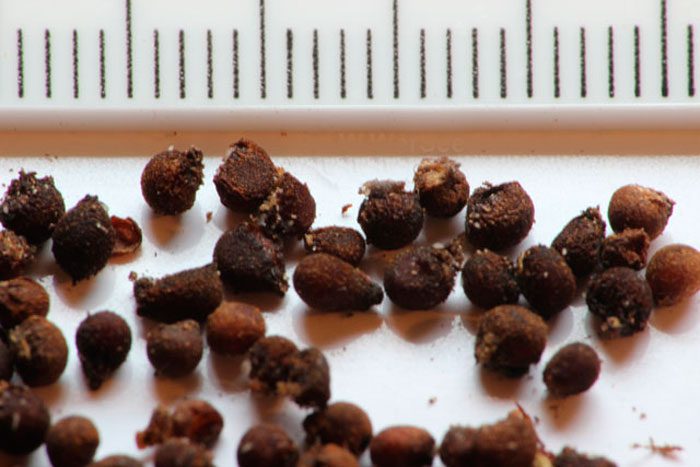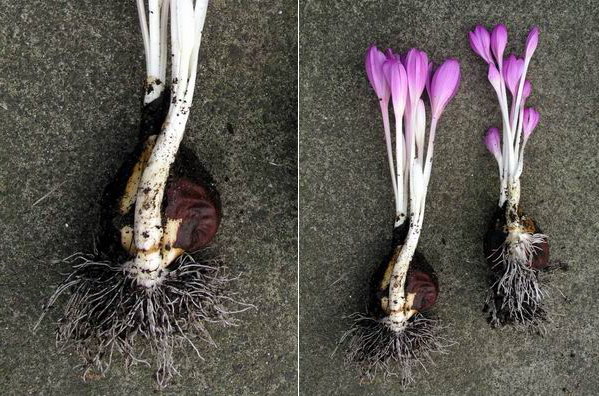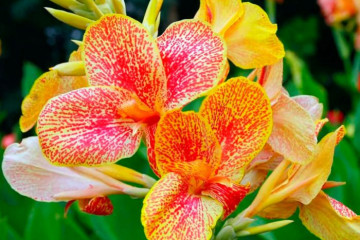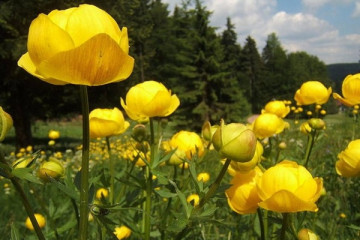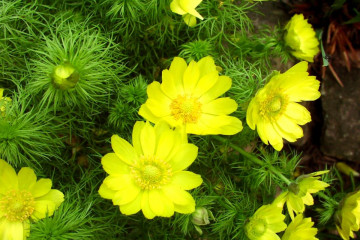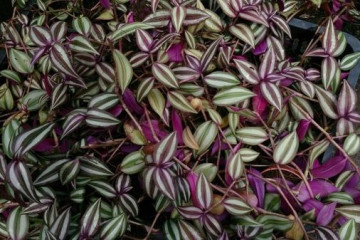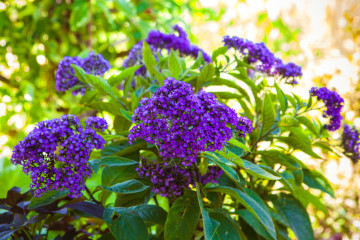Colchicum flower
Content:
- What does colchicum look like
- History of the appearance of Colchicum
- Common varieties of crocus, description
- Colchicum planting and care in the garden
- Features of caring for a crocus in winter
- How and when the crocus blooms
- How to care for the crocus during the flowering period
- Growing colchicum from seeds
- Transplanting a crocus to a new place
- Possible problems in the cultivation of colchicum.
- Medicinal use.
- Preparation of the tincture
Gardeners are very fond of colchicum - a flower that is otherwise called Colchicum, because it blooms in the fall, when all other flowers have turned yellow and withered. Colchicum is popularly called the "timeless color" and also the "autumn color". Colchicums are wonderful plants that will beautify the garden when other plants have faded long ago. Kolhikums are beautiful and unpretentious to care for. They will perfectly tolerate both heat and cold. Moreover, these are long-term plants, they will bloom for about 6-7 years.
What does colchicum look like
Colchicum flowers are large enough, up to 12 cm in diameter and up to 60 cm in height, depending on the variety, of a pleasant lilac or lilac-pink color. The petals are either with pointed ends or with rounded ends. The stem of the flower is long, erect, bare and white. One tuber grows from five to twelve flowers.
The leaves are bright green, with a slightly wavy edge, oval-drop-shaped with a blunt tip, similar to the leaves of lilies of the valley. They reach 30 cm in length and 6 cm in width.
The corm is conical in shape, covered with dark brown membranous scales. A white tube grows from it, thanks to which the flower breaks through the soil.
All colchicum have terry petals, the degree of terry depends on the variety. The most "fluffy" petals of the Byzantine colchicum. All colchicums have six stamens.
History of the appearance of Colchicum
The earliest mentions of colchicum, or colchicum, are found in ancient writings from civilizations such as Egypt, India and Greece. Wild croppers grow in Europe, Asia and the Mediterranean. The juice of these plants was used in the treatment of gout and rheumatism. In the nineteenth century, doctors began to study colchicum. After fifty years of research, the mass production of preparations from the columbus began. Colchicum is listed in the Red Book and has been given the Rare status.
Common varieties of crocus, description
Colchicum has many varieties, so choosing the right one for your garden will not be difficult.
Colchicum Autumn
The most famous type of colchicum. Its bulbs, flowers and seeds are used medicinally to treat leukemia, asthma, gout, rheumatism.
Colchicum the Magnificent, or Colchicum Speciosum
This is the largest of all types of croplands. Grows from 20 to 60 cm in height. The flowers are pink-purple, sometimes purple. Also, this species has checkerboard and striped colors.
Colchicum Giant
It differs from the Columnar Magnificent in its saturated pink color of the petals. The stem grows up to 25 cm in height.
Colchicum Byzantine
The rarest of all the above varieties of colchicum. 10-12 lilac-pink flowers grow from the corms. Their diameter reaches 10-12 cm. Petals are smooth and shiny.
Colchicum planting and care in the garden
Planting and caring for autumn crocus does not require special skills and costs. They grow on any soil, but the most suitable one that allows moisture to pass through well. The soil should be loose.
It is advisable to plant the plant in well-lit places or slightly darkened by other plants. It is impossible to plant colchicum in shady places in order to avoid rotting of corms. Colchicum tolerates heat and frost well.
Landing order
Before planting the corms, the soil must be dug up, 1/2 bucket of sand and 1 bucket of humus must be added to one square meter. During the planting of the bulbs, wood ash and superphosphate are used as fertilizers. To prepare it, you need a liter of ash and one tablespoon of phosphate per square meter of soil.
Colchicum blooms in the fall, so plant it in mid-August. If the bulb is good, then the plant can bloom in the first year. It is necessary to plant autumn flowers so that there is a distance of at least 10 cm between the corms. Depending on the size of the bulbs, they are planted to a depth of 8 cm to 20 cm. The larger the bulb, the deeper it needs to be planted.
The tube on the bulb, formed by scales, should stick out from the ground. Otherwise, it will be difficult for flowers to break through the soil, the petals will be crooked and small.
Care after landing
The soil must be periodically loosened, fertilized and weeds removed. For feeding, a complex mineral fertilizer is used, which includes nitrogen. Fertilize from the moment of planting until the beginning of summer. Feed colchicum once every 2-3 weeks.
Abundant watering will lead to rotting of the bulbs, especially if the soil does not conduct moisture well. The garden crocus can be watered only during the flowering period, provided there is a long absence of rain. Excess moisture will lead to fungal diseases or slugs and snails.
Features of caring for a crocus in winter
After the autumn flower has faded, it is necessary to remove all weeds and cover the flower bed with peat. If the winters are cold, then additionally cover with a layer of foliage. The crocus does not require any other additional care in winter.
How and when the crocus blooms
In early spring, oval-shaped leaves of bright green color appear. They grow until mid-summer and then gradually begin to turn yellow and dry. Withered leaves and seed pods remain on the soil surface. Under the ground at this time, a flowering tube sprouts from the bulb. When it is shown above the surface of the earth, the funnel-shaped flowers of the columbus begin to grow. This happens at the end of the summer.
How to care for the crocus during the flowering period
When colchicum begins to bloom, you need to pay attention to the amount of precipitation. If flowering occurred during a dry period, you need to thoroughly water the flowers.
Growing colchicum from seeds
This method is suitable for breeding spring varieties of crocus. And also it is used as an addition to vegetative reproduction.By the middle of summer, the seed pod is fully formed and dries up. At this time, the seeds are ready for planting.
First you need to cut off the slightly blackened box and leave it in the fresh air, but always in the shade.
Sow seeds as early as possible. Otherwise, there is a chance that they will not germinate at all. The seeds are buried to a depth of 1.5 cm. In a year, the first flowers may appear.
This breeding method is suitable for the most patient gardeners, since many years pass before the first flowers appear. However, by this method of reproduction, the most beautiful and healthy specimens of crocus can be derived.
Germinating seeds
The seeds must be soaked for half an hour and then rinsed with a stream of water. Prepare holes, but not too deep. Place drainage, sand and soil on the bottom. Before planting seeds in open ground, pour a little water over the soil. Lower the seeds into the hole, without sprinkling the soil on top.
Transplanting a crocus to a new place
Colchicum should be transplanted every 3-4 years, because they multiply quickly, each corm leaves up to three daughter bulbs per year. If you do not plant croppers, then over time it will become cramped for them, and the flowers will be small. When the flowers start to grow too close together, the crocus should be repotted.
When to dig a crocus for transplant
To transplant Colchicum, the bulbs must be dug up in the first half of June, when the leaves turn yellow. After that, carefully clean them from the soil and separate the daughter bulbs from the mother ones.
Only daughter corms are suitable for transplanting. They need to be rinsed with running water and placed in a potassium permanganate solution for 30 minutes. After this, the bulbs must be properly dried and removed to a dark and dry place.
When to transplant autumn flowering colchicum
In early August, you can plant corms in the ground. It is necessary to plant colchicum according to the above algorithm. If everything is done correctly, then the crocus can start in the very first year.
Possible problems in the cultivation of colchicum.
The main problem that gardeners face are snails and slugs. They can appear if croppers are planted where the shadow constantly falls, or the soil is too wet. In order to prevent the reproduction of these pests, it is necessary to constantly inspect the leaves and flowers of the crocus. And also to loosen the soil and avoid waterlogging.
If slugs appear, then they need to be removed. And to get rid of snails, use molluscicides, for example, methiocarb or metaldehyde.
Frequent watering or heavy rainfall can result in gray rot. This is a fungal disease of colchicum. It is easy to spot: gray spots, unpleasant to the touch. To get rid of gray rot, you need to cut off all heavily affected parts of the plant (leaves, flowers), destroy them. Experienced gardeners recommend burning the affected plants. Treat all other flowers with special agents, for example "Kuproksat" or "Chemdlinny".
Medicinal use.
Tinctures are made from the onion and the root of the crocus. To do this, you need to dig up the corms along with the roots. The damaged and small ones should be thrown away, as they will quickly rot. Carefully peel the root from the ground, remove shoots and shoots from the corms. After that, dry the bulbs in a dry and dark place on a horizontal surface.
Dried bulbs can be stored for no longer than three months. The raw materials were procured exclusively with gloves.
Preparation of the tincture
Grind the root of the colchicum and pour 1/2 teaspoon of colchicum with 500 ml of boiling water. Apply 2 drops every 40 minutes. after meals with water. Over time, increase the dose to 8 drops.
Due to its properties, this tincture is used for jaundice, whooping cough, dropsy, rheumatic, neuralgic pains, heart weakness.
Colchicum is an unusual flower that does not require much care. Despite this, he will delight with his beauty on gray autumn days and decorate the garden. In addition, gardeners make tinctures from its corms and roots, which are beneficial for health and help in the treatment of many diseases.
